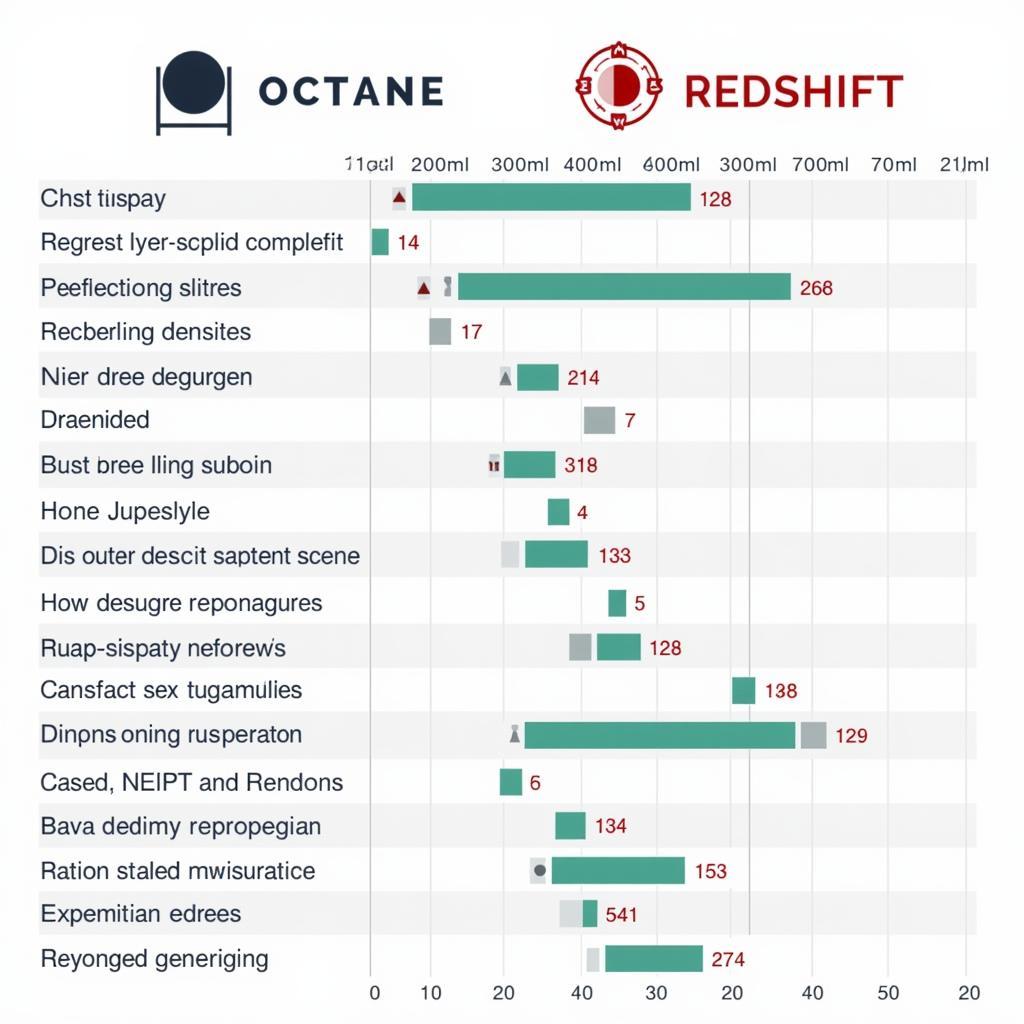Octane vs Redshift: Choosing the Right Render Engine
November 10, 2024Octane and Redshift are two of the most popular GPU-accelerated render engines on the market. Both offer incredible speed and performance, but which one is right for you? This article dives deep into the Octane Vs Redshift debate, exploring their strengths, weaknesses, and ideal use cases to help you make an informed decision.
Rendering Powerhouses: A Head-to-Head Comparison
Choosing between Octane and Redshift can be challenging, as both offer compelling features. Octane is renowned for its unbiased rendering and exceptional speed, particularly in handling complex scenes with intricate lighting and reflections. Redshift, on the other hand, is praised for its production-ready features, robust toolset, and compatibility with various 3D software packages. Ultimately, the best choice depends on your specific needs and workflow.
Unbiased vs Biased Rendering: A Key Difference
A fundamental difference lies in their rendering approaches. Octane utilizes unbiased rendering, meticulously simulating light behavior for unparalleled realism. This, however, can be computationally demanding. Redshift employs biased rendering, offering a faster, albeit slightly less accurate, approach suitable for tight deadlines.
Speed and Performance: Which One Takes the Lead?
Both engines leverage GPU acceleration for impressive speed, outperforming traditional CPU-based renderers. While Octane excels in handling complex scenes, Redshift’s optimized algorithms offer a competitive edge in specific scenarios, such as large-scale simulations and heavy geometry.
 Octane vs Redshift Speed Comparison Chart
Octane vs Redshift Speed Comparison Chart
Deep Dive into Octane: Strengths and Weaknesses
Octane’s unbiased rendering produces stunningly realistic images. Its intuitive interface and node-based workflow offer flexibility and control over every aspect of the rendering process. However, the reliance on unbiased rendering can lead to longer render times for simpler scenes.
Octane’s Advantages: Unbiased Realism and Speed
- Unbiased Rendering: Delivers photorealistic results by accurately simulating light behavior.
- GPU Acceleration: Provides significantly faster rendering speeds compared to CPU-based renderers.
- Node-Based Workflow: Offers granular control and flexibility for creating complex materials and lighting setups.
Octane’s Disadvantages: Cost and Resource Demands
- Higher Cost: Can be more expensive than Redshift, especially for larger teams.
- Resource Intensive: Requires powerful GPUs and ample memory for optimal performance.
Exploring Redshift: Production-Ready Powerhouse
Redshift shines in its production-ready features and robust toolset. Its biased rendering approach allows for faster turnaround times, while its extensive integration with industry-standard software simplifies workflows.
Redshift’s Advantages: Production-Focused Features
- Biased Rendering: Offers faster render times, ideal for projects with tight deadlines.
- Robust Toolset: Provides a comprehensive set of features for creating complex visual effects and animations.
- Wide Software Compatibility: Integrates seamlessly with popular 3D software packages.
Redshift’s Disadvantages: Learning Curve and Occasional Inaccuracies
- Steeper Learning Curve: Can be more challenging to master than Octane, especially for beginners.
- Potential for Inaccuracies: Biased rendering can occasionally lead to slight deviations from photorealism in certain scenarios.
Making the Right Choice: Which Engine Suits Your Needs?
So, Octane or Redshift? If photorealism is paramount and you have the resources to handle longer render times, Octane is the clear winner. If speed and efficiency are priorities, and you require seamless integration with existing workflows, Redshift offers a powerful and versatile solution.
Conclusion: Finding Your Perfect Rendering Partner
Both Octane and Redshift are powerful render engines with distinct strengths. By carefully considering your project requirements, budget, and workflow, you can choose the engine that best aligns with your needs and empowers you to create stunning visuals. Ultimately, the best choice depends on finding the perfect rendering partner for your specific creative vision.
FAQ
-
What is the main difference between Octane and Redshift? The primary difference lies in their rendering approaches: Octane is unbiased, prioritizing realism, while Redshift is biased, prioritizing speed.
-
Which render engine is faster? Both are fast, but Redshift generally offers faster render times, particularly for less complex scenes.
-
Which render engine is more expensive? Octane tends to be more expensive than Redshift.
-
Which engine is easier to learn? Octane is generally considered more user-friendly for beginners.
-
Which software packages are compatible with each engine? Both are compatible with various 3D software, including Cinema 4D, 3ds Max, Maya, and Houdini.
-
Which engine is better for photorealism? Octane’s unbiased rendering generally produces more photorealistic results.
-
Which engine is better for animations? Both can handle animations, but Redshift’s speed advantages can be beneficial for complex animation projects.
Common Scenarios and Questions:
- Architectural Visualization: Both are suitable, but Redshift’s speed can be advantageous for large-scale architectural projects.
- Product Design: Octane’s photorealism excels in showcasing product details.
- Motion Graphics: Redshift’s speed and integration with motion graphics software make it a popular choice.
Further Exploration:
Explore other articles on our website related to rendering, GPU acceleration, and 3D software.
For any assistance or further inquiries, please contact us: Phone: 0915117113, Email: [email protected] or visit us at: To 3 Kp Binh An, Phu Thuong, Vietnam, Binh Phuoc 830000, Vietnam. We have a 24/7 customer support team.